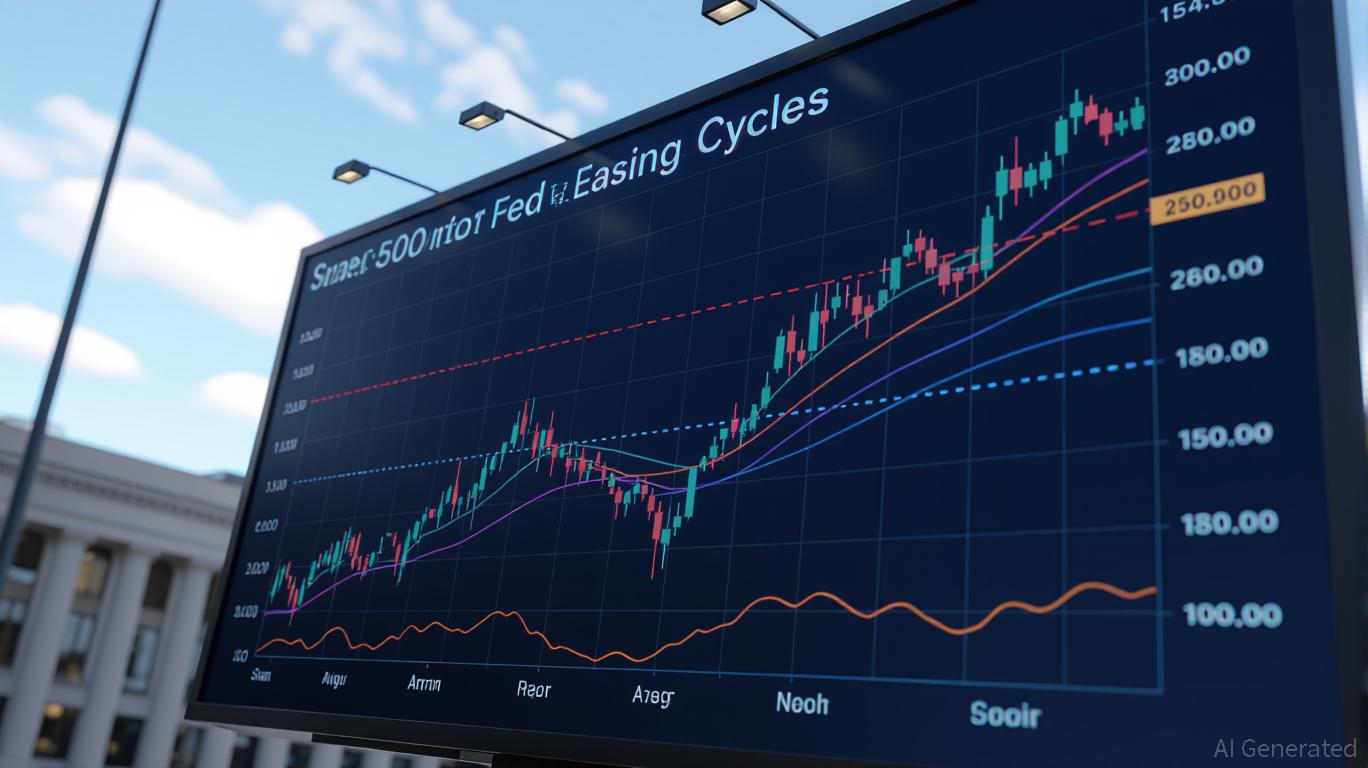
The Federal Reserve’s anticipated 2025 rate-cutting cycle has ignited a recalibration of market strategies, with investors increasingly pivoting toward sectors poised to capitalize on lower borrowing costs. As the Fed signals a shift from inflation control to labor market support, the interplay between monetary policy and sectoral performance is becoming a critical determinant of capital appreciation. For growth-oriented investors, the current environment offers a rare confluence of macroeconomic tailwinds and sector-specific momentum, particularly in AI, cloud computing, and industrial real estate.
The Fed’s Easing Trajectory: A Tailwind for High-Growth Sectors
The Fed’s projected 175-basis-point rate cuts by mid-2025, following a 50-basis-point reduction in September 2024, are reshaping capital allocation dynamics. Historically, easing cycles have disproportionately benefited sectors with high sensitivity to interest rates. For instance, during the 2009–2015 easing period, the S&P 500’s information technology sector outperformed by 120%, driven by cheaper financing for R&D and capital expenditures. Today, AI and cloud computing firms are replicating this pattern.
Recent Q2 2025 earnings underscore this trend. NVIDIA’s revenue surged 69% year-over-year to $44 billion, fueled by demand for AI chips like the H100 and Blackwell. Microsoft and Amazon’s cloud divisions (Azure and AWS) also reported double-digit growth, outpacing broader corporate trends. reveals a 300% surge since 2023, reflecting the market’s anticipation of AI-driven earnings.
Consumer Staples and Healthcare: Defensive Anchors in a Volatile Market
While high-growth sectors dominate headlines, defensive sectors like consumer staples and healthcare remain critical for risk mitigation. Companies such as Costco and Walmart have capitalized on value-seeking consumers amid inflationary pressures, with consistent demand for essentials providing downside protection. Tuniu Corporation, a travel and tourism firm, reported a 15% year-over-year revenue increase in Q2 2025, driven by live streaming and offline store expansion.
Healthcare’s resilience is equally compelling. With aging demographics and rising healthcare costs, the sector’s demand is inelastic, making it a safe haven during economic uncertainty. shows the sector outperforming during market downturns, such as the 2022 selloff.
Industrial Real Estate and Cloud Computing: Capitalizing on Refinancing Tailwinds
Industrial real estate is another beneficiary of Fed easing. As interest rates decline, refinancing risks for commercial properties diminish, compressing cap rates and boosting valuations. Prologis and Amazon’s logistics partnerships exemplify this trend, with Q2 2025 earnings highlighting robust demand for warehouse space driven by e-commerce growth.
Cloud computing’s structural growth is equally compelling. Lower rates reduce the cost of capital for cloud infrastructure, enabling firms to scale operations. Xunlei Limited’s cloud segment, for instance, grew 13.6% year-over-year in Q2 2025, driven by enterprise demand for scalable solutions. illustrates a 200% outperformance, underscoring its long-term potential.
Market Sentiment and Strategic Positioning
Market sentiment, amplified by Fed speculation, has created a bifurcated landscape. The “Magnificent 7” now account for 36% of the S&P 500’s gains since April 2025, while the median stock lags 10.9% below its 52-week high. This concentration risk highlights the need for disciplined sector rotation. Investors should overweight AI and cloud computing while balancing with defensive holdings in consumer staples and healthcare.
ETFs like the Xtrackers Artificial Intelligence and Big Data ETF (XAIX) and the Vanguard Dividend Appreciation ETF (VIG) offer diversified exposure to these themes. However, macroeconomic headwinds—such as Trump-era tariffs and potential 50% levies on Brazilian imports—necessitate a hedged approach.
Conclusion: A Timely Entry Point Amid Policy Uncertainty
The Fed’s easing cycle, combined with sector-specific momentum, presents a compelling case for strategic positioning. While AI and cloud computing offer high-growth potential, defensive sectors provide stability in a volatile environment. Investors who align their portfolios with these dynamics can capitalize on the Fed’s tailwinds while mitigating risks from macroeconomic shocks. As the September 2025 rate cut looms, the key lies in balancing innovation-driven growth with prudent risk management.
serves as a barometer for monetary policy’s impact on sector valuations, with declining yields historically correlating with outperformance in high-duration assets like tech stocks.
